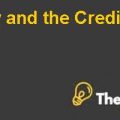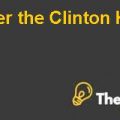Boston Properties (A) & (B) Case Study Solution
What value was being placed on the conversion option implicitly by the Market?
The value that has been placed on the conversion options that tend to be implicitly by the market is amounted to $29197031.15, this is calculated by applying the yield i.e. 3.8 percent. The calculations can be seen in Appendix B.
Was the market correctly valuing this conversion option?
The Black-Scholes formula is being used for the purpose of determining that whether the market has correctly valued the conversion option. The price of stock is taken $102.61, while the exercise price of option is $8.5051. also, the number of periods to exercise in years are 5.5 years.
In addition to this, the compounded risk-free rate of interest is 5% while the standard deviation in terms of annualized beta is 30%. The value of the call is amounted to $96.14. the calculation can be seen in Appendix C.
Opinion on conversion option is more mispriced than in the first half of September
In my opinion, the conversion option is more mis prices as it is asserted by Ms. Baena. The conversion options are one of the option trading strategy that is widely employed with the intent of exploiting the perceived inefficiencies that tend to be existing in the pricing of option. It is to notify that the convention option is mispriced due to the over priced call options and under priced put option, which has done because of the market inefficiencies as well as effects of the mis-priced interest rate assumptions.
In addition to this, the yield of the convertible has risen to 5.083% while the yield of the non-convertible bond have risen to .041% and the volatility of the bond have risen to 41%, which indicates that the stocks are mispriced, creating short opportunities for the overpriced shares and long opportunities for the under priced companies.
what trade(s)would Ms. Baena need to make?
Despite of the convertible arbitrate opportunity, it is to recommend that Ms. Baena should contemplated to invest in the relative value strategy that would seek to take advantages of the differences in prices between the financial instruments such as bonds and stocks by simultaneously selling and buying the differ securities, hence it would allow her to potentially profit from the two securities’ relative value.
In addition to this, the relative value fund hedge strategy tends to perform better in the market with low volatility and it has lower risk. Another main appeal of this strategy is that this can be used for the purpose of extracting profits in market where it is challenging to do so such as sideways or range bound markets.
It is significantly important for Ms. Baena to have a skills and knowledge to evaluate the market as well as individual securities in order to gain profit from relative value hedge fund strategy. Therefore, the skill level and knowledge required for succeeding with such strategy depicts that it is only a strategy that is appropriate and suitable for the high-end investor, willing to understand the involved risk or challenges as well.
Conclusion
To sum up, it is to conclude that the investment manager Eliza Baena had convertible bond arbitrage opportunity when she started observing the narrowing spread between straight bond and convertible bond. The value of the bond portion is $78123216, while the cvalue placed on the conversion of option is $29197031. Also, the value of the call option is $96.14993.Besides, she can also invest in the relative value fund hedge strategy which would bring various benefits to company.
Appendix A
| 6.25% non-convertible traded at par. | ||
| Principle or total face value | 92500000 | |
| Convertible bond coupon | 3.63% | |
| Yield | 6.25% | |
| Maturity | 5.5 years | |
| Coupon | Every 6 months | |
| Interest payments | 5781250 | |
| Market rate (assumed) | 10% | 0.05 |
| Present value of the bond's interest payments | |||||||||||
| Sep-08 | Feb-09 | Aug-09 | Feb-10 | Aug-10 | Feb-11 | Aug-11 | Feb-12 | Aug-12 | Feb-13 | Aug-13 | Feb-14 |
| 2890625 | |||||||||||
| $24,010,716 | |||||||||||
| Present Value of the Bond's Maturity Amount | |||||||||||
| Sep-08 | Feb-09 | Aug-09 | Feb-10 | Aug-10 | Feb-11 | Aug-11 | Feb-12 | Aug-12 | Feb-13 | Aug-13 | Feb-14 |
| 54112500 | |||||||||||
| 1. $24010716 of present value for the interest payments, PLUS | |||||||||||
| 2. $54112500 of present value for the maturity amount. | |||||||||||
| $78,123,216 | |||||||||||
Appendix B
| Sep-08 | Feb-09 | Aug-09 | Feb-10 | Aug-10 | Feb-11 | Aug-11 | Feb-12 | Aug-12 | Feb-13 | Aug-13 | Feb-14 |
| 3515000 | |||||||||||
| 29197031.15 |
Appendix C
| Input Data | ||
| Stock Price now (P) | 102.61 | |
| Exercise Price of Option (EX) | 8.5051 | |
| Number of periods to Exercise in years (t) | 5.5 | |
| Compounded Risk-Free Interest Rate (rf) | 5.00% | |
| Standard Deviation (annualized s) | 30.00% | |
| Output Data | ||
| Present Value of Exercise Price (PV(EX)) | 6.4602 | |
| s*t^.5 | 0.7036 | |
| d1 | 4.2822 | |
| d2 | 3.5786 | |
| Delta N(d1) Normal Cumulative Density Function | 1.0000 | |
| Bank Loan N(d2)*PV(EX) | 6.4591 | |
| Value of Call | 96.14993 | |
This is just a sample partical work. Please place the order on the website to get your own originally done case solution.










